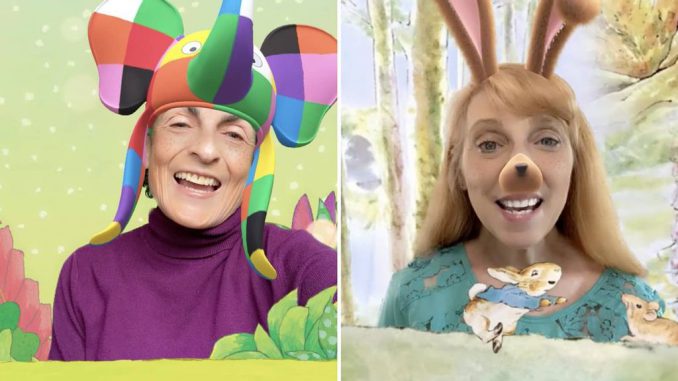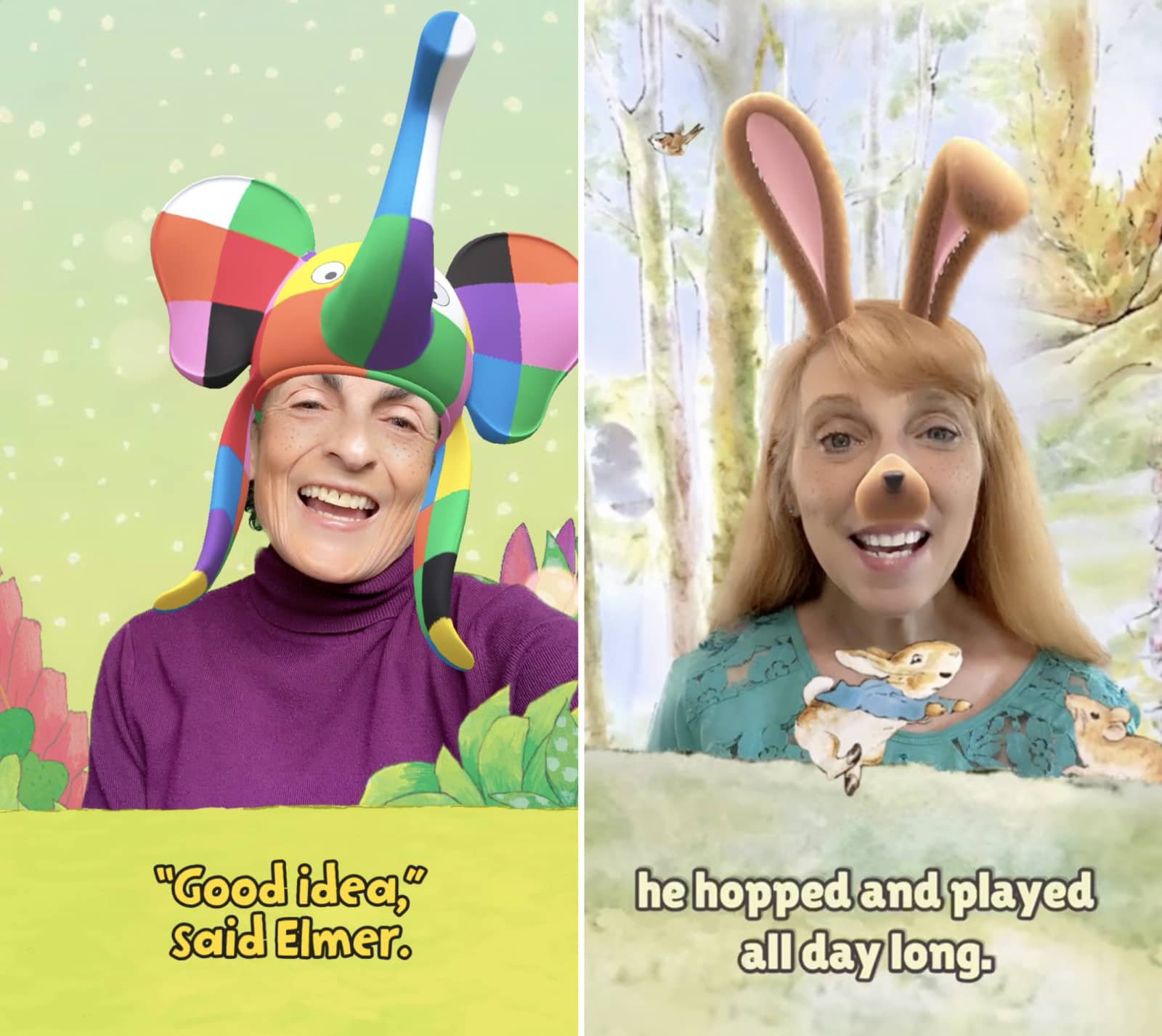
“It was so funny!” exclaimed my son’s four-year-old daughter after I sent her a silly augmented reality video of myself singing preschool pop tune “Baby Shark” enhanced by animation, sound effects and background scenery. “We loved it!” my daughter-in-law told me.
When I sent the video to my daughter’s three- and five-year-olds, they were amazed to see my face superimposed on a blue shark and wondered how that magic happened.
This little masterpiece was created with Zoog, an Israeli app designed to enhance communication between grandparents and their grandchildren – or between traveling parents and kids or aunts/uncles and their nieces/nephews.
Judging by my unscientific survey, I’d say Zoog is a hit. Now I’m eager to experiment with the content available for my older grandchildren, too. You can create personalized videos for each child whose name you save in the system, and send it via messaging app, social media or shared link.

Zoog (Hebrew for “couple” or “pair”) was the brainchild of father-of-three Yoav Oren during the early days of the Covid pandemic. His parents missed the kids and the kids needed entertainment in lockdown. But it’s really hard to engage tots in long-distance conversations, video or otherwise.
Oren and a fellow Israeli dad, Matan Guttman, were already working on a tech product aimed at baby-boomer grandparents. So they pivoted to a product that could facilitate high-tech, user-friendly interactions with little loved ones.
“There are 70 million grandparents in the US, and the vast majority get to see their grandchildren only twice a year, even without Covid. We knew that when the pandemic was over, the communication problem would remain,” said Oren.
After a lot of market research, brainstorming, meetings with grandparents, and trial and error, Zoog was officially launched in the United States in early 2021.
Zoog began with a library of a few children’s stories that the user is prompted to read while the app takes care of the AR elements. You never have to worry about what to say, read or sing next. The app now offers dozens of stories, songs, jokes, greeting cards and educational activities. There are new releases every week. Some of the content is free, which is great for test Zoogers like me. Most of it is available to paid subscribers.
“We have 40,000 monthly active users and 2,000 paid subscribers on Zoog,” said Oren to Media reports on January 10. The number has risen to 2,600 since then. “About 84% of our users are American. Grandparents in the US spend $179 billion per year on gifts for their grandchildren. So we’re solving a real problem and it’s something people are willing to pay for.”
It’s pretty easy to use, and if you don’t like how your video turned out you can redo it. A series of tutorial videos is available for further assistance.
“The average Zooger records and shares five times a week,” said Oren. “Since it’s not live, you can record and share whenever you want, and the kids can open it whenever they want and as often as they want, on any device. The recordings are stored forever.”
Kids can leave video responses as they watch, or request the next story they want you to read. Feedback is enthusiastic. “My first creation was ‘I’m a little teapot.’ I was told my grandson watched it about 25 times in a row!” one user reported. Another said that Zoog is now “an essential tool in my grandparent toolbox.”

Zoog was bootstrapped for the first few months. Today its backers include Guy Gamzu (an early investor in Fiverr), Rotten Tomatoes cofounder Patrick Lee and other angel investors; in addition to VCs such as Insight Partners, OurCrowd, Remagine Ventures and Comcast NBCUniversal. The startup is now aiming to raise an additional $3 million.
“The war caused three potential investors to back out, which was very frustrating and hurtful, but we have commitments from previous backers and some new ones,” said Oren.
The war has affected Zoog’s 10-person team in other ways, too. Some have been on active reserve duty since the beginning of the war, while half of the staff fled overseas with their families for the first few weeks.
“It was hard getting people psychologically back together,” admits Oren, who has also been dealing with a family health crisis. “But we’ve continually and consistently delivered and improved. November was the best month in company history. From September to December we grew 100% in terms of revenue despite the war. Our team has been incredible.”
Zoog’s internal studio of illustrators, animators, 3D artists and AR creators churn out three to four new pieces of content every week. The company has partnerships with major content creators including DreamWorks, Paramount Pictures and Penguin Random House, and in addition adapts content from the public domain and makes unique content from scratch.
January has been a busy month for Zoog. Cofounder Matan Guttman presented Zoog at CES in Las Vegas, and the company participated in the Global EdTech Startups Awards (GESAwards) in London on January 24, having won the Israeli finals organized by MindCET.
Produced in association with ISRAEL21c
